Investigating the Pharmacological Impact of Atosiban, an Oxytocin Receptor Antagonist, on Bladder and Prostate Contractions Within OBESE and Non-Obese Rats
Abstract
1. Introduction
2. Material and Methods
2.1. Animal Ethics
2.2. Tissue Collection
2.3. Reagent Preparation
2.4. Organ Bath Experiments
2.5. Tissue Viability
2.6. Rationale for Drug Concentration
2.7. Data Acquisition and Analysis
2.8. Immunohistochemistry
2.9. Image Acquisition and Quantification
3. Results
3.1. Organ Bath Findings
3.1.1. Tissue and Body Weights
3.1.2. Tissue Viability Confirmed via Potassium Chloride
3.1.3. Effects of Atosiban on Spontaneous Contractions
3.2. Oxytocin Enhances Bladder Contractility in Obese Rats
3.3. Atosiban Attenuates Oxytocin-Induced Bladder Contractions
3.4. Immunohistochemistry Findings
3.4.1. OXTR Expression in Bladder
3.4.2. OXTR Expression in Prostate
4. Discussion
5. Conclusions
Supplementary Materials
Author Contributions
Funding
Institutional Review Board Statement
Data Availability Statement
Acknowledgments
Conflicts of Interest
List of Abbreviations
| Abbreviation | Meaning |
| LUTS | Lower Urinary Tract Symptoms |
| OAB | Overactive Bladder |
| BPH | Benign Prostatic Hyperplasia |
| OT | Oxytocin |
| AT | Atosiban |
| OXTR | Oxytocin Receptor |
| MetS | Metabolic Syndrome |
| IHC | Immunohistochemistry |
| SMC | Smooth Muscle Cell |
| α-SMA | Alpha-Smooth Muscle Actin |
| AUC | Area Under the Curve |
| IP3 | Inositol Triphosphate |
| DAG | Diacylglycerol |
| PLC | Phospholipase C |
| DAPI | 4′,6-Diamidino-2-Phenylindole |
| LH | Luteinizing Hormone |
| FSH | Follicle-Stimulating Hormone |
| HDL-C | High-Density Lipoprotein Cholesterol |
| PDE-5 Inhibitors | Phosphodiesterase Type 5 Inhibitors |
References
- Abrams, P.; Cardozo, L.; Fall, M.; Griffiths, D.; Rosier, P.; Ulmsten, U.; Van Kerrebroeck, P.; Victor, A.; Wein, A. The standardisation of terminology in lower urinary tract function: Report from the standardisation sub-committee of the International Continence Society. Urology 2003, 61, 37–49. [Google Scholar] [CrossRef] [PubMed]
- Rohrmann, S.; Smit, E.; Giovannucci, E.; A Platz, E. Association between markers of the metabolic syndrome and lower urinary tract symptoms in the Third National Health and Nutrition Examination Survey (NHANES III). Int. J. Obes. 2005, 29, 310–316. [Google Scholar] [CrossRef]
- Yamaguchi, O.; Aikawa, K.; Shishido, K.; Nomiya, M. Place of overactive bladder in male lower urinary tract symptoms. World J. Urol. 2009, 27, 723–728. [Google Scholar] [CrossRef]
- Lepor, H. Pathophysiology of lower urinary tract symptoms in the aging male population. Rev. Urol. 2005, 7 (Suppl. 7), S3. [Google Scholar] [PubMed]
- McNeal, J. The prostate gland: Morphology and pathobiology. Monogr. Urol. 1988, 9, 36–54. [Google Scholar]
- De Onis, M.; Lobstein, T. Defining Obesity Risk Status in the General Childhood Population: Which Cut-Offs Should We Use? Taylor & Francis: Abingdon, UK, 2010; pp. 458–460. [Google Scholar]
- Onis, M.D.; Onyango, A.W.; Borghi, E.; Siyam, A.; Nishida, C.; Siekmann, J. Development of a WHO growth reference for school-aged children and adolescents. Bull. World Health Organ. 2007, 85, 660–667. [Google Scholar] [CrossRef]
- Kaur, J. A Comprehensive Review on Metabolic Syndrome. Cardiol. Res. Pract. 2014, 2014, 943162. [Google Scholar] [CrossRef]
- Kupelian, V. Nocturia sleep disturbance the metabolic syndrome. J. Urol. 2012, 188, 2041–2042. [Google Scholar] [CrossRef]
- Araujo, A.B.; Yaggi, H.K.; Yang, M.; McVary, K.T.; Fang, S.C.; Bliwise, D.L. Sleep related problems and urological symptoms: Testing the hypothesis of bidirectionality in a longitudinal, population based study. J. Urol. 2014, 191, 100–106. [Google Scholar] [CrossRef]
- Denys, M.-A.; Anding, R.; Tubaro, A.; Abrams, P.; Everaert, K. Lower urinary tract symptoms and metabolic disorders: ICI-RS 2014. Neurourol. Urodyn. 2016, 35, 278–282. [Google Scholar] [CrossRef]
- Heart, N.; Grundy, S.M.; Cleeman, J.I.; Daniels, S.R.; Donato, K.A.; Eckel, R.H.; American Heart Association. Diagnosis and management of the metabolic syndrome: An American Heart Association/National Heart, Lung, and Blood Institute scientific statement. Circulation 2005, 112, 2735–2752. [Google Scholar]
- Churilla, J.R.; Fitzhugh, E.C.; Thompson, D.L. The metabolic syndrome: How definition impacts the prevalence and risk in US adults: 1999–2004 NHANES. Metab. Syndr. Relat. Disord. 2007, 5, 331–342. [Google Scholar] [CrossRef] [PubMed]
- Radomski, S.; Jayarajan, J. Radomski, Pharmacotherapy of overactive bladder in adults: A review of efficacy, tolerability, and quality of life. Res. Rep. Urol. 2013, 6, 1–16. [Google Scholar]
- Kuteesa, W.; Moore, K.H. Anticholinergic drugs for overactive bladder. Aust. Prescr. 2006, 29, 22–24. [Google Scholar] [CrossRef]
- Hegde, S.S. Muscarinic receptors in the bladder: From basic research to therapeutics. Br. J. Pharmacol. 2006, 147, S80–S87. [Google Scholar] [CrossRef]
- Woo, H.H.; Gillman, M.P.; Gardiner, R.; Marshall, V.; Lynch, W.J. A practical approach to the management of lower urinary tract symptoms among men. Med. J. Aust. 2011, 195, 34–39. [Google Scholar] [CrossRef]
- Wang, C. Phosphodiesterase-5 inhibitors and benign prostatic hyperplasia. Curr. Opin. Urol. 2010, 20, 49–54. [Google Scholar] [CrossRef]
- Trost, L.; Saitz, T.R.; Hellstrom, W.J. Side effects of 5-alpha reductase inhibitors: A comprehensive review. Sex. Med. Rev. 2013, 1, 24–41. [Google Scholar] [CrossRef]
- Brown, C.H. Magnocellular neurons and posterior pituitary function. Compr. Physiol. 2011, 6, 1701–1741. [Google Scholar] [CrossRef]
- Gimpl, G.; Fahrenholz, F. The oxytocin receptor system: Structure, function, and regulation. Physiol. Rev. 2001, 81, 629–683. [Google Scholar] [CrossRef]
- Patel, H.; Jessu, R.; Tiwari, V. Physiology, Posterior Pituitary. In StatPearls [Internet]; StatPearls Publishing: Treasure Island, FL, USA, 2018. [Google Scholar] [PubMed]
- Bodanszky, M.; Sharaf, H.; Roy, J.B.; Said, S.I. Contractile activity of vasotocin, oxytocin, and vasopressin on mammalian prostate. Eur. J. Pharmacol. 1992, 216, 311–313. [Google Scholar] [CrossRef] [PubMed]
- Ludwig, M.; Leng, G. Dendritic peptide release and peptide-dependent behaviours. Nat. Rev. Neurosci. 2006, 7, 126–136. [Google Scholar] [CrossRef] [PubMed]
- Chakrabarty, B.; Dey, A.; Lam, M.; Ventura, S.; Exintaris, B. Tamsulosin modulates, but does not abolish the spontaneous activity in the guinea pig prostate gland. Neurourol. Urodyn. 2015, 34, 482–488. [Google Scholar] [CrossRef]
- Cafarchio, E.M.; Da Silva, L.A.; Auresco, L.C.; Rodart, I.F.; De Souza, J.S.; Antonio, B.B.; Venancio, D.P.; Maifrino, L.B.; Maciel, R.M.; Giannocco, G.; et al. Oxytocin reduces intravesical pressure in anesthetized female rats: Action on oxytocin receptors of the urinary bladder. Front. Physiol. 2020, 11, 382. [Google Scholar] [CrossRef] [PubMed]
- Filippi, S.; Vannelli, G.B.; Granchi, S.; Luconi, M.; Crescioli, C.; Mancina, R.; Natali, A.; Brocchi, S.; Vignozzi, L.; Bencini, E.; et al. Identification, localization and functional activity of oxytocin receptors in epididymis. Mol. Cell. Endocrinol. 2002, 193, 89–100. [Google Scholar] [CrossRef]
- Mewe, M.; Wulfsen, I.; Middendorff, R.; Bauer, C.K. Differential modulation of bovine epididymal activity by oxytocin and noradrenaline. Reproduction 2007, 134, 493–501. [Google Scholar] [CrossRef]
- Basaria, S. Reproductive aging in men. Endocrinol. Metab. Clin. 2013, 42, 255–270. [Google Scholar] [CrossRef]
- Basaria, S. Male hypogonadism. Lancet 2014, 383, 1250–1263. [Google Scholar] [CrossRef]
- Baillargeon, J.; Urban, R.J.; Ottenbacher, K.J.; Pierson, K.S.; Goodwin, J.S. Trends in androgen prescribing in the United States, 2001 to 2011. JAMA Intern. Med. 2013, 173, 1465–1466. [Google Scholar] [CrossRef]
- Palmer, N.O.; Bakos, H.W.; Fullston, T.; Lane, M. Impact of obesity on male fertility, sperm function and molecular composition. Spermatogenesis 2012, 2, 253–263. [Google Scholar] [CrossRef]
- Xia, J.Y.; Holland, W.L.; Kusminski, C.M.; Sun, K.; Sharma, A.X.; Pearson, M.J.; Sifuentes, A.J.; McDonald, J.G.; Gordillo, R.; Scherer, P.E. Targeted induction of ceramide degradation leads to improved systemic metabolism and reduced hepatic steatosis. Cell Metab. 2015, 22, 266–278. [Google Scholar] [CrossRef] [PubMed]
- Mah, M.S.; Cao, E.; Anderson, D.; Escott, A.; Tegegne, S.; Gracia, G.; Schmitz, J.; Brodesser, S.; Zaph, C.; Creek, D.J.; et al. High-fat feeding drives the intestinal production and assembly of C16: 0 ceramides in chylomicrons. Sci. Adv. 2024, 10, eadp2254. [Google Scholar] [CrossRef] [PubMed]
- Arrowsmith, S.; Wray, S. Oxytocin: Its mechanism of action and receptor signalling in the myometrium. J. Neuroendocrinol. 2014, 26, 356–369. [Google Scholar] [CrossRef]
- Jurek, B.; Neumann, I.D. The oxytocin receptor: From intracellular signaling to behavior. Physiol. Rev. 2018, 98, 1805–1908. [Google Scholar] [CrossRef]
- McCarthy, M.M. Oxytocin and the regulation of the onset of labor: Effects on myometrial contractility. Am. J. Obstet. Gynecol. 1996, 174, 458–464. [Google Scholar]
- Wray, S. Atosiban: The oxytocin antagonist. Pharmacol. Ther. 2003, 99, 141–157. [Google Scholar]
- Romine, M.T.; Anderson, G.F. Evidence for oxytocin receptors in the urinary bladder of the rabbit. Can. J. Physiol. Pharmacol. 1985, 63, 287–291. [Google Scholar] [CrossRef]
- Tarhan, F.; Çağlayan Duman, N.; Özkula, S.; Karaalp, A.; Cangüven, Ö. In vitro contractile responses of human detrusor smooth muscle to oxytocin: Does it really have effect? Aging Male 2020, 23, 1141–1145. [Google Scholar] [CrossRef]
- Assinder, S.J.; Nicholson, H.D. Effects of steroids on oxytocin secretion by the human prostate in vitro. Int. J. Androl. 2004, 27, 12–18. [Google Scholar] [CrossRef]
- Lee, S.N.; Kraska, J.; Papargiris, M.; Teng, L.; Niranjan, B.; Hammar, J.; Ryan, A.; Frydenberg, M.; Lawrentschuk, N.; Middendorff, R.; et al. Oxytocin receptor antagonists as a novel pharmacological agent for reducing smooth muscle tone in the human prostate. Sci. Rep. 2021, 11, 6352. [Google Scholar] [CrossRef]
- Exintaris, B.; Klemm, M.F.; Lang, R.J. Spontaneous slow wave and contractile activity of the guinea pig prostate. J. Urol. 2002, 168, 315–322. [Google Scholar] [CrossRef] [PubMed]
- Aaron, L.; Franco, O.E.; Hayward, S.W. Review of prostate anatomy and embryology and the etiology of benign prostatic hyperplasia. Urol. Clin. 2016, 43, 279–288. [Google Scholar] [CrossRef]
- Badshah, M.; Ibrahim, J.; Su, N.; Whiley, P.; Middendorff, R.; Whittaker, M.; Exintaris, B. Age-Dependent Effects of Oxytocin and Oxytocin Receptor Antagonists on Bladder Contractions: Implications for the Treatment of Overactive Bladder Syndrome. Biomedicines 2024, 12, 674. [Google Scholar] [CrossRef] [PubMed]
- Herbert, Z.; Bötticher, G.; Aschoff, A.; Sendemir, E.; Zermann, D.; Arnold, R.; Mall, G.; Jirikowski, G.F. Changing Caveolin-1 and oxytocin receptor distribution in the ageing human prostate. Anat. Histol. Embryol. 2007, 36, 361–365. [Google Scholar] [CrossRef] [PubMed]
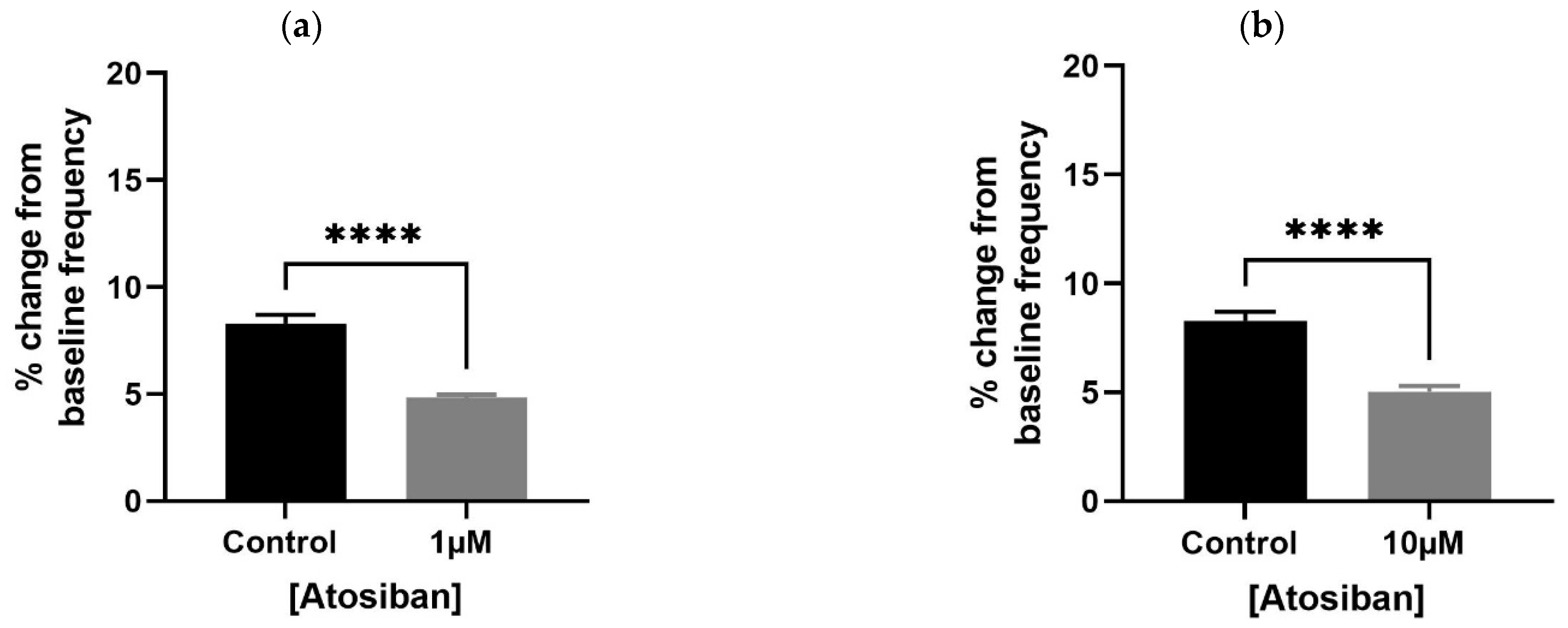
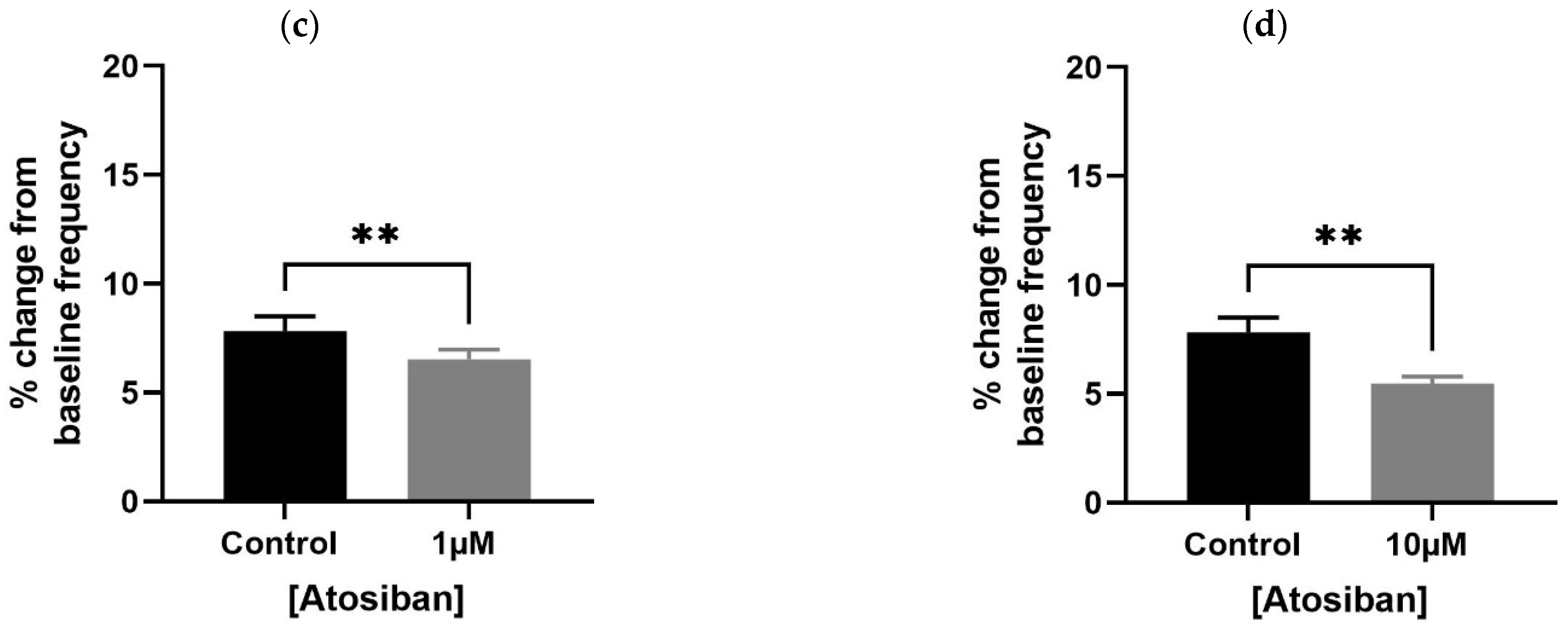
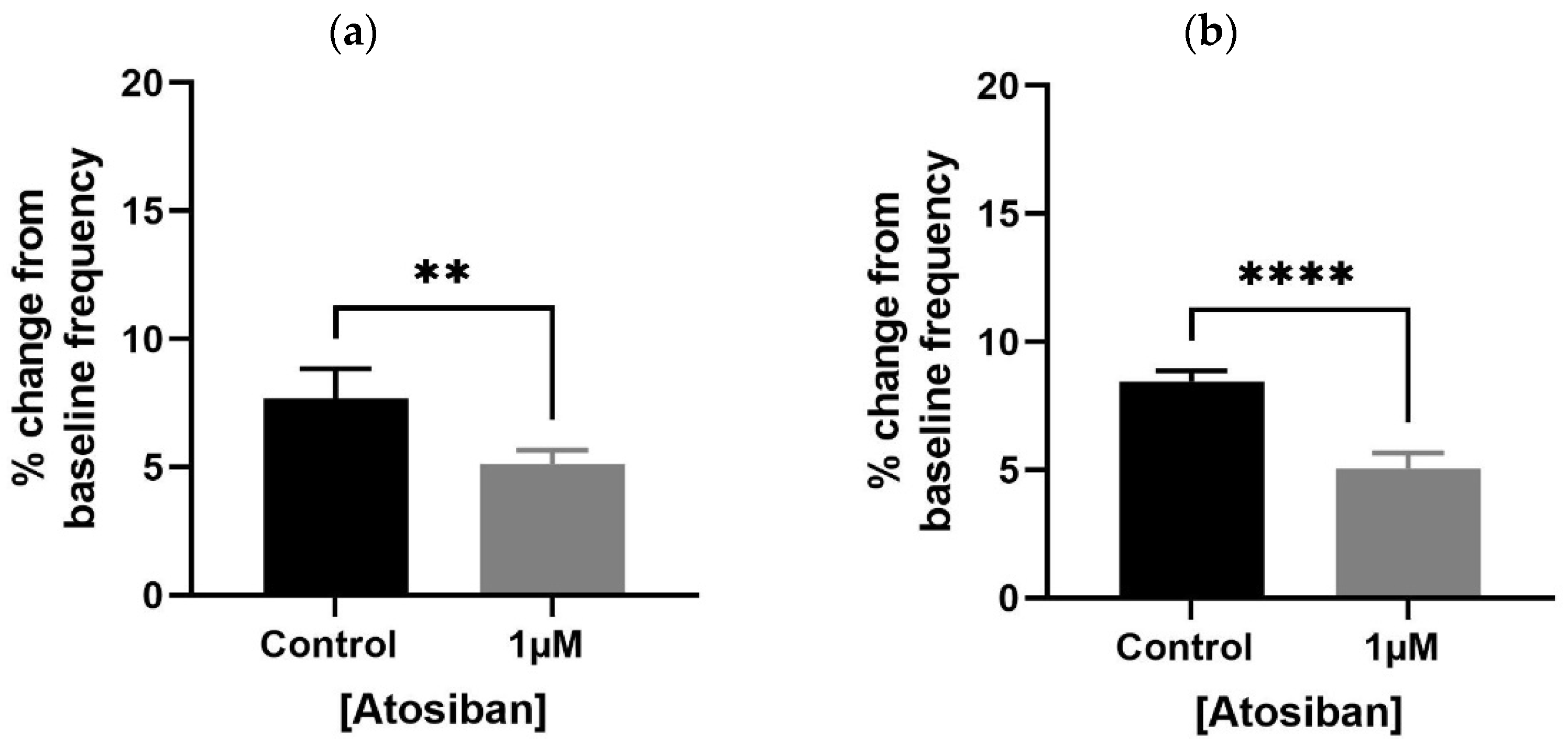
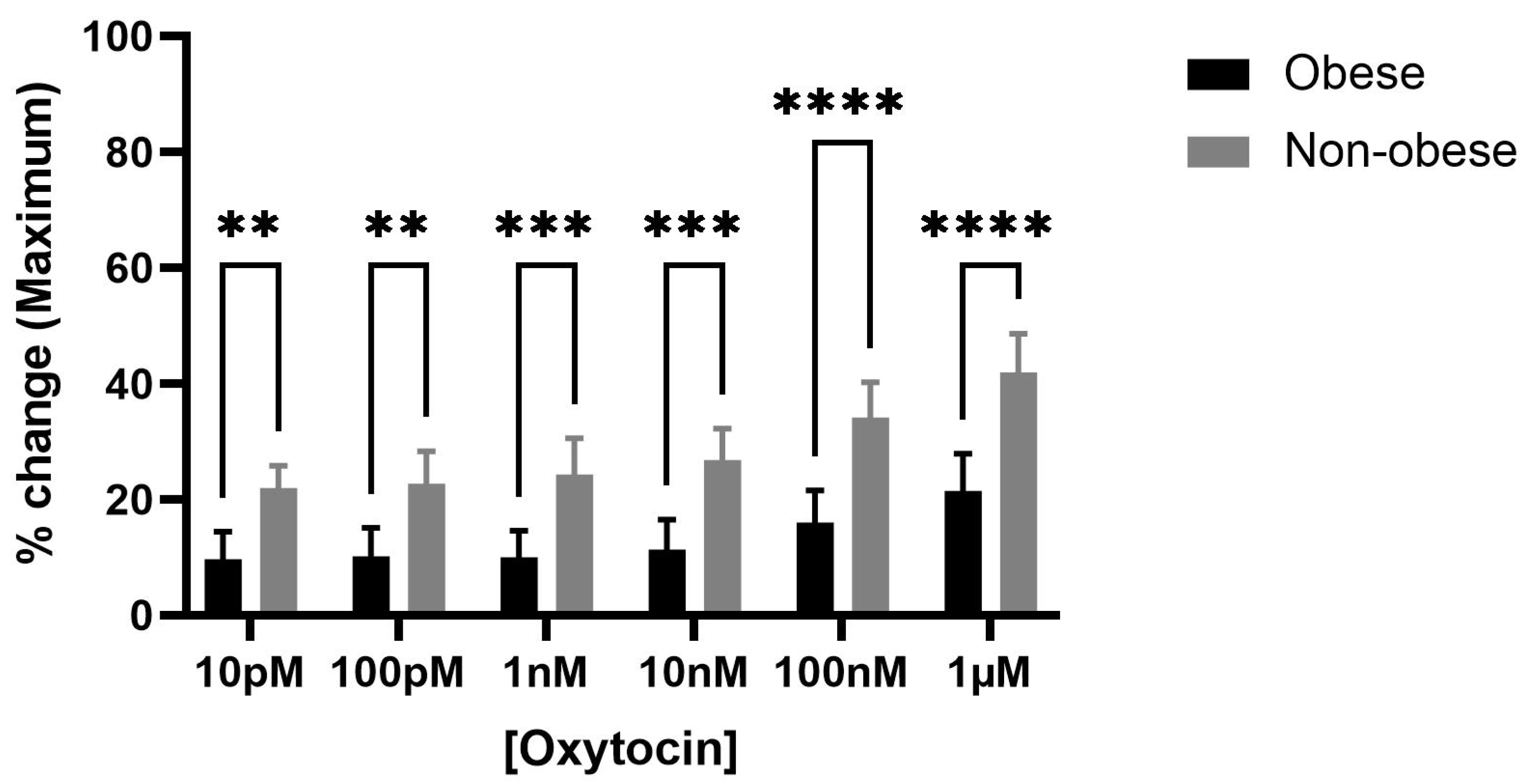
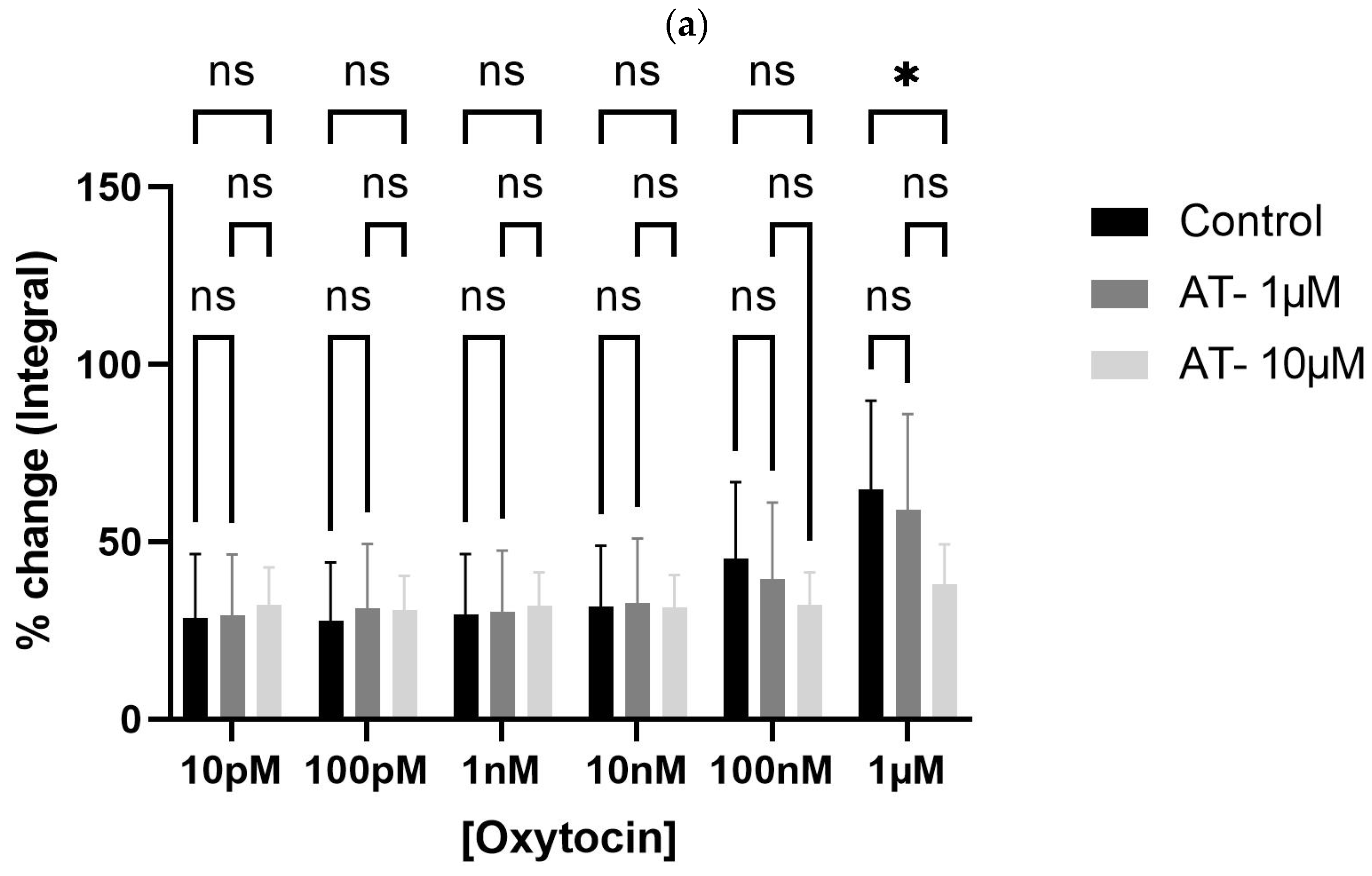
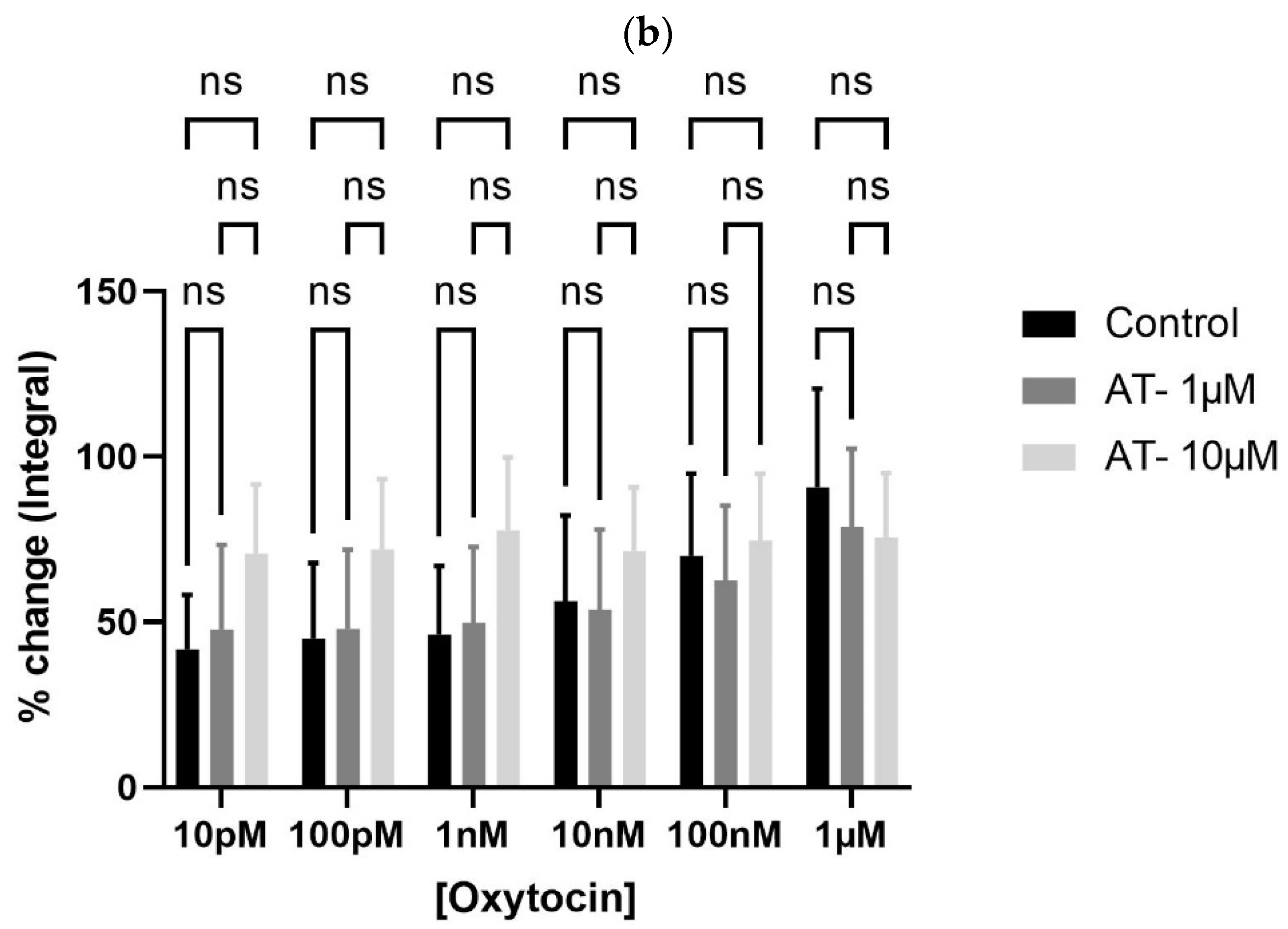
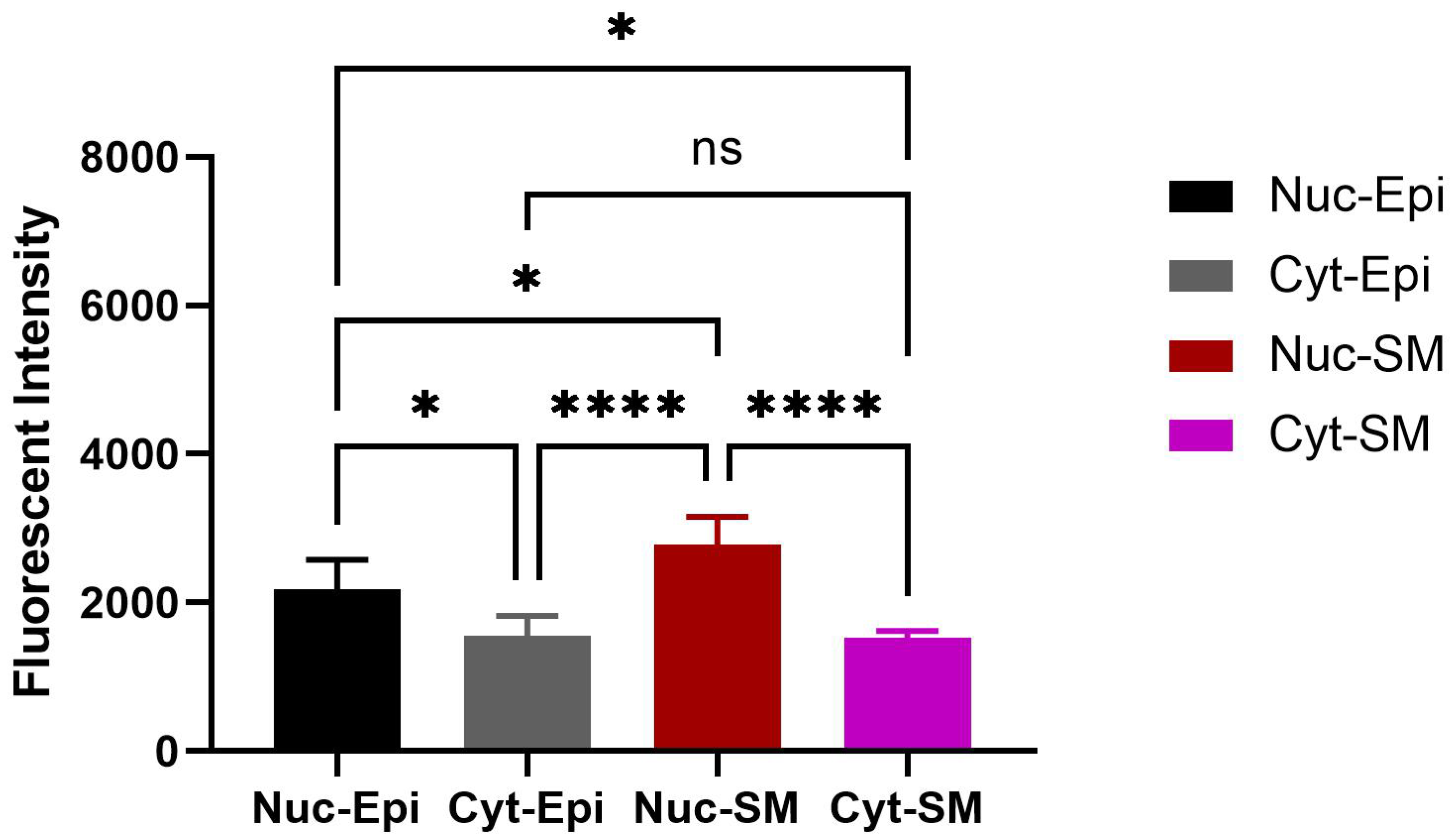
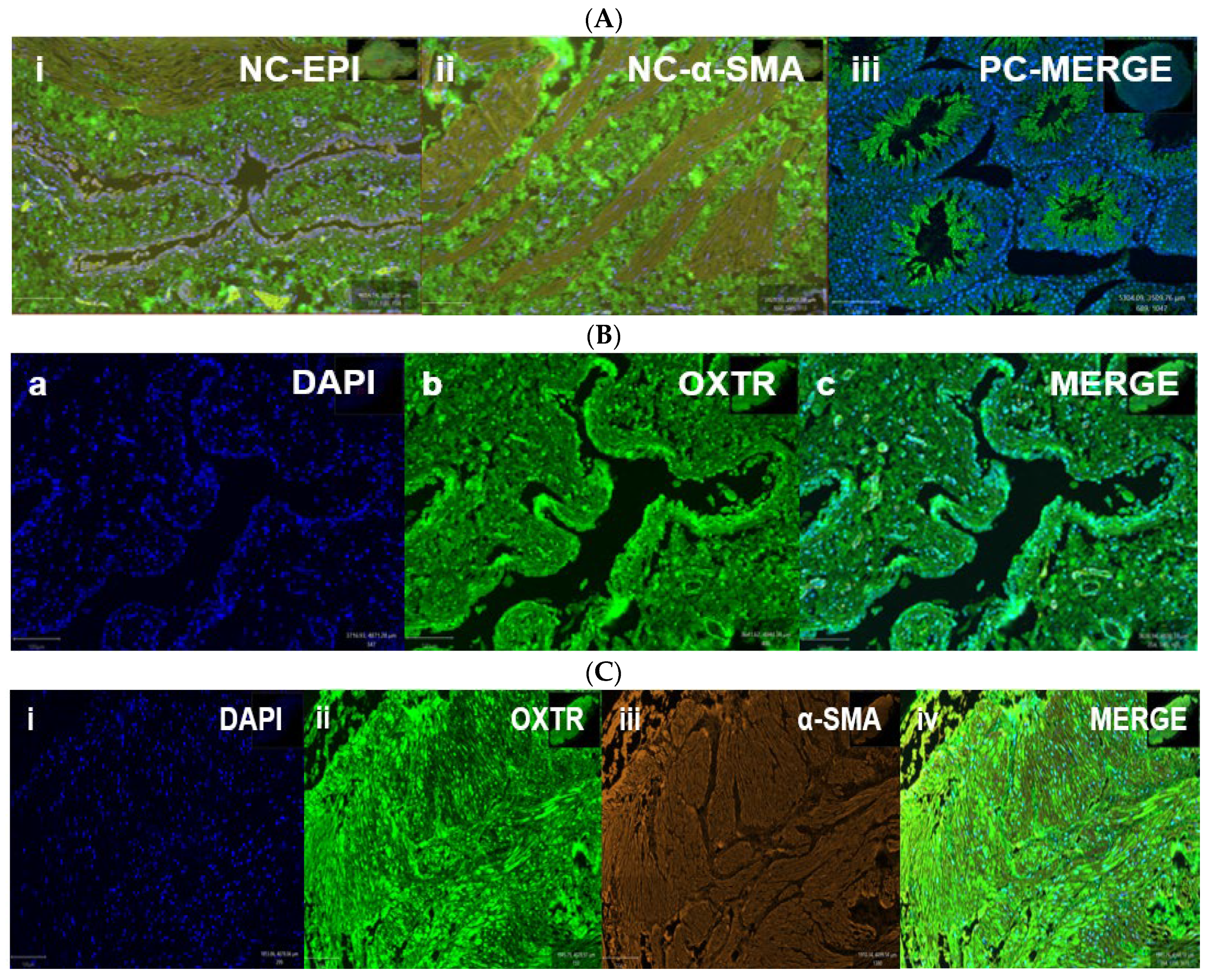
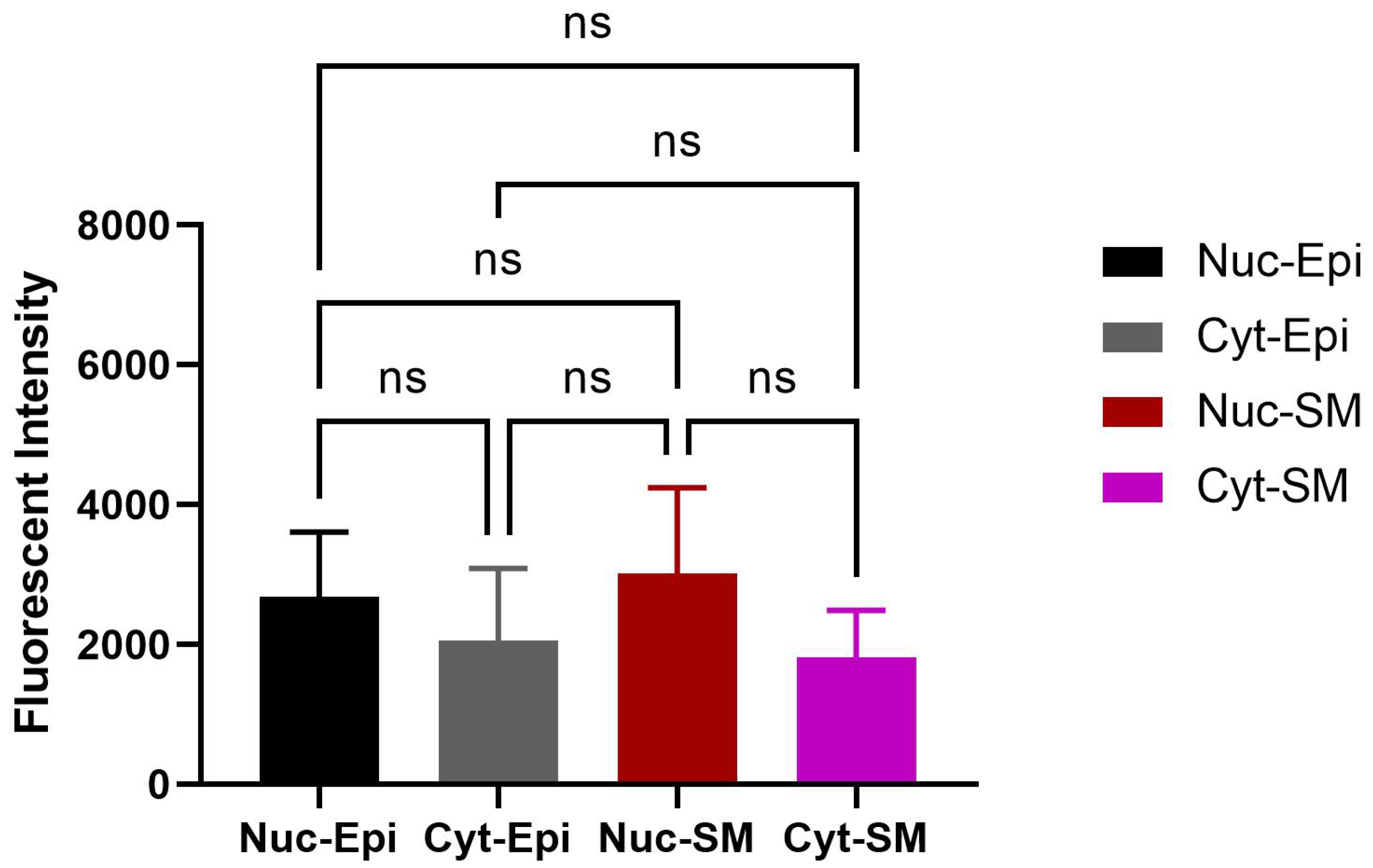


Disclaimer/Publisher’s Note: The statements, opinions and data contained in all publications are solely those of the individual author(s) and contributor(s) and not of MDPI and/or the editor(s). MDPI and/or the editor(s) disclaim responsibility for any injury to people or property resulting from any ideas, methods, instructions or products referred to in the content. |
© 2025 by the authors. Licensee MDPI, Basel, Switzerland. This article is an open access article distributed under the terms and conditions of the Creative Commons Attribution (CC BY) license (https://creativecommons.org/licenses/by/4.0/).
Share and Cite
Badshah, M.; Ibrahim, J.; Su, N.; Whiley, P.; Turpin-Nolan, S.M.; Elnahriry, K.A.; Middendorff, R.; Whittaker, M.; Exintaris, B. Investigating the Pharmacological Impact of Atosiban, an Oxytocin Receptor Antagonist, on Bladder and Prostate Contractions Within OBESE and Non-Obese Rats. Biomedicines 2025, 13, 2097. https://doi.org/10.3390/biomedicines13092097
Badshah M, Ibrahim J, Su N, Whiley P, Turpin-Nolan SM, Elnahriry KA, Middendorff R, Whittaker M, Exintaris B. Investigating the Pharmacological Impact of Atosiban, an Oxytocin Receptor Antagonist, on Bladder and Prostate Contractions Within OBESE and Non-Obese Rats. Biomedicines. 2025; 13(9):2097. https://doi.org/10.3390/biomedicines13092097
Chicago/Turabian StyleBadshah, Masroor, Jibriil Ibrahim, Nguok Su, Penny Whiley, Sarah M. Turpin-Nolan, Khaled A. Elnahriry, Ralf Middendorff, Michael Whittaker, and Betty Exintaris. 2025. "Investigating the Pharmacological Impact of Atosiban, an Oxytocin Receptor Antagonist, on Bladder and Prostate Contractions Within OBESE and Non-Obese Rats" Biomedicines 13, no. 9: 2097. https://doi.org/10.3390/biomedicines13092097
APA StyleBadshah, M., Ibrahim, J., Su, N., Whiley, P., Turpin-Nolan, S. M., Elnahriry, K. A., Middendorff, R., Whittaker, M., & Exintaris, B. (2025). Investigating the Pharmacological Impact of Atosiban, an Oxytocin Receptor Antagonist, on Bladder and Prostate Contractions Within OBESE and Non-Obese Rats. Biomedicines, 13(9), 2097. https://doi.org/10.3390/biomedicines13092097




